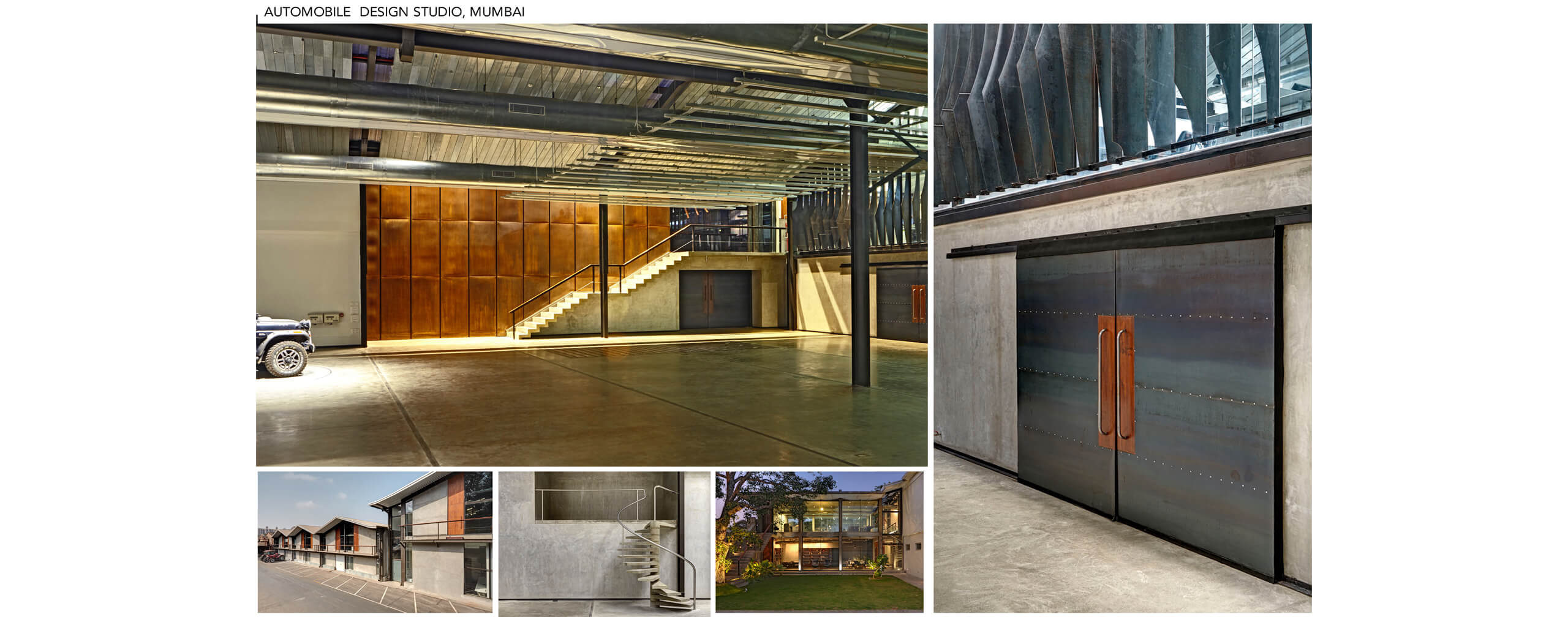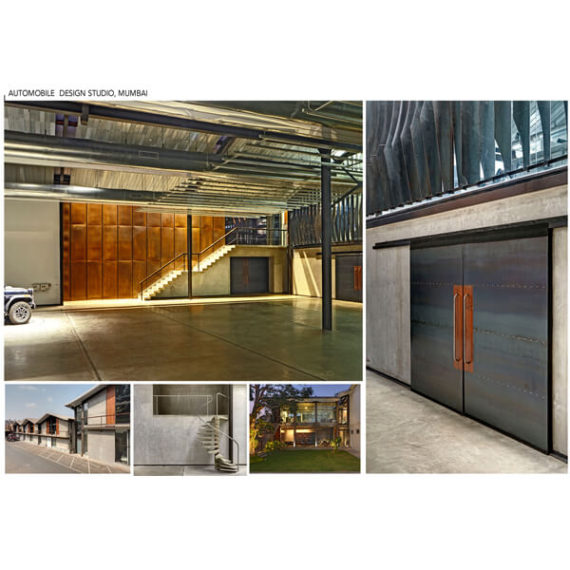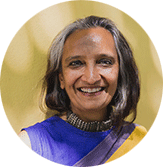18 Feb Shimul Javeri Kadri


A commonality of purpose was emerging – to create contextual and crafted buildings that represented a contemporary India
I was an earth girl as long as I remember – sunlight and wind, the colours of sindoor and haldi, the lure of brick and brass excited me, as did the idea that inequality and slums could be solved by design. Studying architecture and then urban planning opened many doors and expanded the world of possibilities and sometimes constraints.

The possibility that intuition and emotion could coexist with structured rational thought and actually create better out comes. At college in Ann Arbor, I studied politics sociology and economics and stumbled into Feminism and finally taught women’s studies. Design seemed inadequate for the scale of problems I wanted to solve – poverty, inequality and the power equations of colonisation – economic & cultural. My practice began in the 1990’s with liberalization in India. Opportunities to design for a country in growth led to commercial and industrial commissions like a rice mill outside Mumbai to projects within the city -like an office in a burnt down warehouse and an ayurvedic resort in a crowded residential area. Clients grew in their ambitions and fortunes and we grew with them. Innovation was possible as talented people joined – Vaishali Shankar in 2000 and Sarika Shetty in 2001.

A commonality of purpose was emerging – to create contextual and crafted buildings that represented a contemporary India. Mumbai being a growth engine for the country – we were soon building in the smaller cities of India – enjoying the climatic and cultural variety of the country as well as the nature of the projects – from a factory for home textiles in Karur to a school in Warangal, both in hot dry climates, and designed for thermal comfort at low costs and using indigenous craftsmanship, We also learnt the power of understanding and empathy in relationships with clients, contractors and team-mates without which design is an empty word.

Two small projects became the crucibles of experimentation and innovation for the office – the leaf house in Alibag and the Nirvana Films office in Bangalore (for which a special award as Winner of Small Projects was created at the World Archit4ecture Festival) Thereafter, The Dasavatara Hotel in Tirupati and the Automobile Design Studio for Mahindra’s helped us consolidate our ideas. The varied nature of the two projects –Tirupati in a historical and religious setting and The Studio in an existing industrial metropolitan environment led to entirely contrasting responses in the use of language and craft, but a common soul. It is this soul that we are nurturing as a practice today.
We define ourselves as a practice that is Crafted, Contextual and Contemporary
TWe define ourselves as a practice that is Crafted, Contextual and Contemporary. The most important element of the current practice is the team – three Design Principals that lead teams – Vaishali Shankar, Sarika Shetty and Roshni Kshirsagar – all women; and we work together with complete support and mutual respect.

We have worked across the country and continue to create new relationships with cities and people in different parts of India. Discovering the essence of people and places is perhaps what is loosely termed as ‘Culture’ and we seek this out in every project. Creating an architectural expression that respects the sun and the wind and cultural histories has defined our practice. We believe in the diversity and innate spirit of all people and we create environments that validate freedom, emotion and hope – to nurture the best in human beings.

We have worked across the country and continue to create new relationships with cities and people in different parts of India. Discovering the essence of people and places is perhaps what is loosely termed as ‘Culture’ and we seek this out in every project. Creating an architectural expression that respects the sun and the wind and cultural histories has defined our practice. We believe in the diversity and innate spirit of all people and we create environments that validate freedom, emotion and hope – to nurture the best in human beings.

The opportunity to think through every problem and generate unique solutions. With every project, details are crafted to support the intentions of the project – whether it is working within an industrial context or a historical or cultural site or a building inserted into a natural environment.
We use and enjoy materials and symbolism to connect and communicate with the society of today. We believe architecture is a language – and its large public presence makes it a strong communicator of the possibilities inherent in society. We believe in equality, plurality and sustainability as some of the greatest values of today and attempt to express these in our work – gentle buildings that sit comfortably in their environments as opposed to mechanized boxes that alienate man and nature.We need to be a profession that defines problems and proposes solutions – rather than awaiting patronage and clientele.
I hope to work with a community
– of people that want to build in harmony with the laws of nature – of people that respect equality among genders, classes and races – of people that create environments of equanimity through simplicity, innovation and beauty.
We need to be a profession that defines problems and proposes solutions – rather than awaiting patronage and clientele. This year saw the first Gender Committee in a Municipal Corporation in India – towards a city that encourages womens participation in the work force and in public spaces. As a member of this committee that has mandated the creation of crèches, working women’s housing and skill training centres for women, we have designed the first prototypes and we hope to create a manual for the future of these institutions.
We believe learning happens when there is freedom of spirit and acceptance .I hope we can create centres of learning that encourage this ideology. Schools, colleges and universities that build on our experience with low cost educational projects in Warangal, and with municipal schools in Mumbai.
We hope we can create homes in our urban areas that are safe, ecological and community oriented to replace the scourge of slums. We hope to promote cultural growth through museums, visitors centres or simply by reviving and interpreting heritage sites to enhance responsible tourism. Mostly, I hope we can bring clarity, community and connectedness into everything we build or even imagine.

Shimul Javeri Kadri
DESIGN FIELD
MASTER- PLANNING, ARCHITECTURE DESIGN & INTERIOR DESIGN
LOCATION
Mumbai, India
STUDIO NAME
SJK ASSOCIATES
ABOUT
Shimul Javeri Kadri studied architecture in Mumbai at the Academy of Architecture, and Urban Planning at the University of Michigan Ann Arbor.
She setup SJK Architects in 1990, which will soon complete the third decade of practice. The diversity of geographical landscapes they have worked in across India is reflected in the multiple vocabularies that they have adopted to adapt to climatic and cultural environments. This has been the most satisfying aspect of the firm’s journey. Reflecting back on almost 30 years, their practice has strong ideological underpinnings – egalitarian democratic societies, a deep respect for nature and living with it, and a fundamental belief in people and their connectedness. This translates, to buildings that sit comfortably and naturally in their environments – shorn of a certain egotistic individualistic character – buildings that embrace natural materials, the sun and the wind, as opposed to mechanized boxes that alienate people and nature.
Shimul’s interest in an architecture that is meaningful for the India of today, drawing from historical wisdom, but relevant and exciting for the vibrant Indian market, has led to an award winning practice that has commissions as varied as hotels for religious tourism, to a museum for Jainism, to educational and research campus’s in the hinterland of different parts of India. Shimul also serves as a Trustee for Akshara, a Women’s resource Centre as well as for Save the Children India where she has been actively steering education and women’s projects. The firm and its work has been written about in various architectural publications in India and abroad, and felicitated widely for their work.


